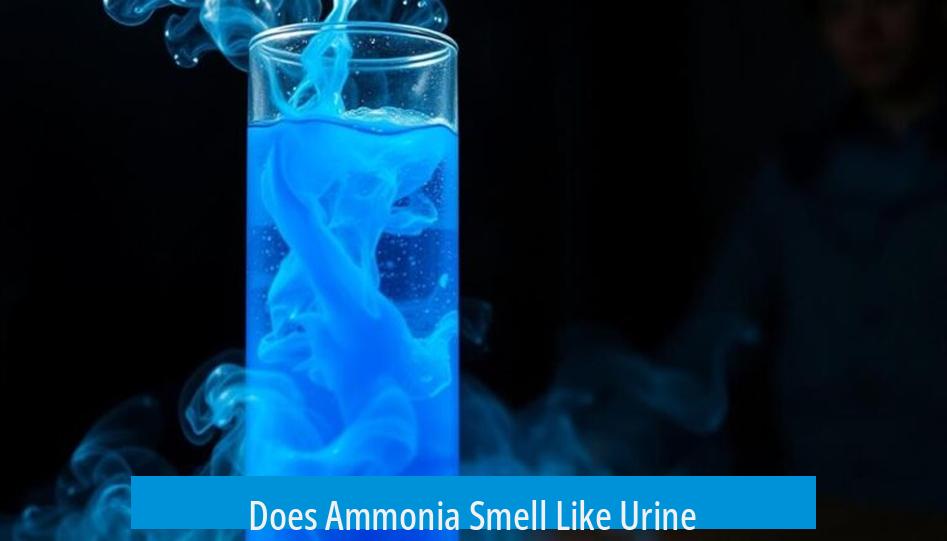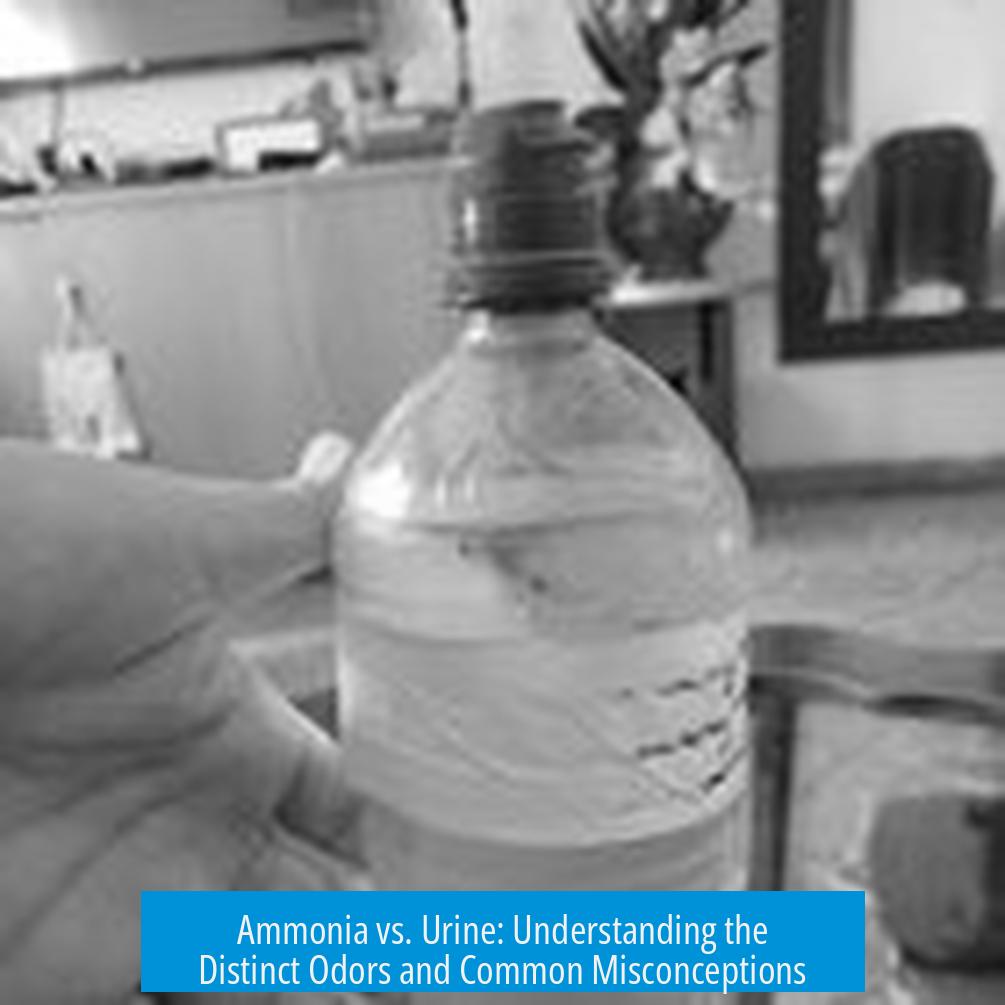Does Ammonia Smell Like Urine?

Ammonia itself does not smell like urine, particularly fresh urine. Instead, ammonia contributes to the odor profile of urine only after it begins to break down over time. Fresh human urine typically lacks the sharp, pungent ammonia scent. The familiar “urine smell” with ammonia notes arises mainly from microbial decomposition of urea into ammonia, developing hours after urination.
Ammonia: A Distinctive Odor
Ammonia produces a very distinct, sharp, and irritating odor often described as “pungent” or “crisp.” Unlike the complex scent of urine, ammonia’s smell is usually perceived as chemical or painful. People often associate it with cleaning products like Windex or swimming pools rather than bodily waste.
- Ammonia’s smell is sharp, harsh, and can cause irritation.
- It smells quite unlike fresh urine; some even describe it as a painful odor.
- Exposure to concentrated ammonia often leads to lingering nasal irritation and cough.
These attributes differentiate ammonia from the more complex and subtle odors found in urine.
Urine’s Complex Odor Profile
Urine contains many chemical components. Among these, ammonia is only a minor contributor. Fresh urine primarily contains urea, which itself has little odor. Other organic compounds contribute more dominantly to the characteristic smell of fresh urine.
- Urea forms the primary nitrogenous waste but smells mild.
- Other constituents such as creatinine and ammonia derivatives contribute nuanced notes.
- Ammonia becomes noticeable only as urea decomposes.
In essence, fresh urine “does not smell like ammonia.” People often confuse ammonia’s strong odor for urine because aged urine produces ammonia as a breakdown product. This happens as microbes metabolize urea into ammonia after urine sits for some time.
Why Old Urine Smells Like Ammonia
When urine is freshly passed, the urea present dominates. Over time, bacteria or microbial agents convert urea to ammonia via enzymatic breakdown—specifically, urea is hydrolyzed by urease. This process releases ammonia gas, which has a sharp stinging odor.
Key points regarding the development of ammonia odor in urine:
- Fresh urine smell generally lacks ammonia.
- Ammonia forms due to microbial activity breaking down urea after a delay of hours.
- Stale urine, such as that in unclean bathrooms or aged diapers, smells strongly of ammonia.
- This explains why ammonia odor is associated with “old urine” rather than fresh.
Comparing Human and Cat Urine Odors
Humans and cats excrete nitrogenous waste differently, leading to different odors. Humans detoxify ammonia into urea before excretion, resulting in less ammoniacal smelling urine initially. Cats, however, excrete uric acid and ammonia directly, which produces a stronger ammonia smell immediately upon urination.
| Feature | Human Urine | Cat Urine |
|---|---|---|
| Main Nitrogenous Waste | Urea | Uric acid and ammonia |
| Immediate Ammonia Smell | No | Yes |
| Odor Strength | Mild in fresh urine; pungent when stale | Strongly ammoniacal upon urination |
This difference explains why “cat piss” is often described directly as ammonia-smelling, while human urine does not typically have this immediate odor.
Misconceptions About Ammonia and Urine Smells
Several misconceptions arise from the close association of ammonia and urine odors. Some believe ammonia inherently smells like urine or vice versa. However, ammonia’s distinctive odor is chemically sharp and unrelated to the complete odor profile of fresh urine.
Points clarifying these misunderstandings include:
- Ammonia is not the main odorant in fresh urine.
- The ammonia scent in urine appears only after microbial breakdown.
- Ammonia by itself smells more like harsh chemicals or cleaning agents.
- The perception of the ammonia smell differs among individuals.
Some people describe ammonia odor as similar to sweat or concentrated chlorine-type smells rather than urine.
Health and Safety Considerations Regarding Ammonia Smell
Exposure to ammonia gas should be treated seriously despite its common association with cleaning agents. Ammonia at sufficient concentration causes irritation to mucous membranes and the respiratory tract.
Key health points to consider:
- If ammonia is undetectable by smell, concentration is probably low and less harmful.
- Do not deliberately sniff ammonia to test its odor; it can damage lungs.
- Smelling ammonia in urine could indicate urinary tract infection or metabolic issues—medical consultation is advisable.
- Ammonia leaks can cause intense irritation, coughing, and discomfort.
Historical and Industrial Context of Ammonia from Urine
Stale urine was historically a source of ammonia for chemical processes. The breakdown of urea into ammonium compounds provided a primitive method for obtaining ammonia for industrial use. One example is producing alum (potassium aluminum sulfate) from shale rock by treating it with stale urine.
Such practices highlight that ammonia’s association with urine mainly relies on chemical transformations occurring over time.
Summary of Personal and Scientific Perspectives
Though ammonia and urine odor are linked, the experience of smelling ammonia differs significantly from smelling fresh urine. Ammonia typically smells like a sharp, chemical irritant. Fresh urine smells mild and complex due to multiple compounds, with urea dominating. The ammonia odor in urine arises as it breaks down and ages, not from fresh urine itself.
Individuals report varying perceptions:
- Some find ammonia odor painfully sharp and harsh.
- Others note ammonia odors resemble cleaning chemicals, swimming pools, or sweat with a sting.
- Many agree that human urine does not initially smell like ammonia.
- Cat urine, in contrast, produces an ammonia odor immediately due to a different biochemical pathway.
Key Takeaways
- Fresh human urine does not smell strongly of ammonia; urea dominates its odor profile.
- Ammonia forms in urine over time as bacteria break down urea into ammonia gas.
- Ammonia has a sharp, irritating chemical smell distinct from fresh urine.
- Cat urine contains ammonia immediately upon excretion, unlike human urine.
- Ammonia odors in urine can indicate stale urine or potential infections.
- Exposure to ammonia gas requires caution due to respiratory irritation risk.
Why does fresh human urine not smell strongly of ammonia?
Fresh urine usually lacks a strong ammonia smell. Ammonia forms when bacteria break down urea over time. So, the ammonia odor appears only after urine has sat and started to decay.
How does the smell of ammonia differ from the smell of urine?
Ammonia has a sharp, irritating, chemical odor, often described as similar to swimming pool cleaner. Urine, however, has a complex smell where ammonia is just a minor component.
Why does cat urine smell more strongly of ammonia compared to human urine?
Cats excrete ammonia directly, so their urine smells strongly of it. Humans convert ammonia to urea in the liver before excretion, so fresh human urine usually lacks that sharp ammonia smell.
Can smelling ammonia be dangerous?
Ammonia is a strong irritant and can cause pain or lung discomfort. It’s best not to sniff it directly. High concentrations can be harmful to health.
What causes stale urine to develop a strong ammonia smell?
When urine sits, microbial activity breaks down urea into ammonia. This breakdown causes the characteristic sharp ammonia odor found in stale or old urine.





Leave a Comment